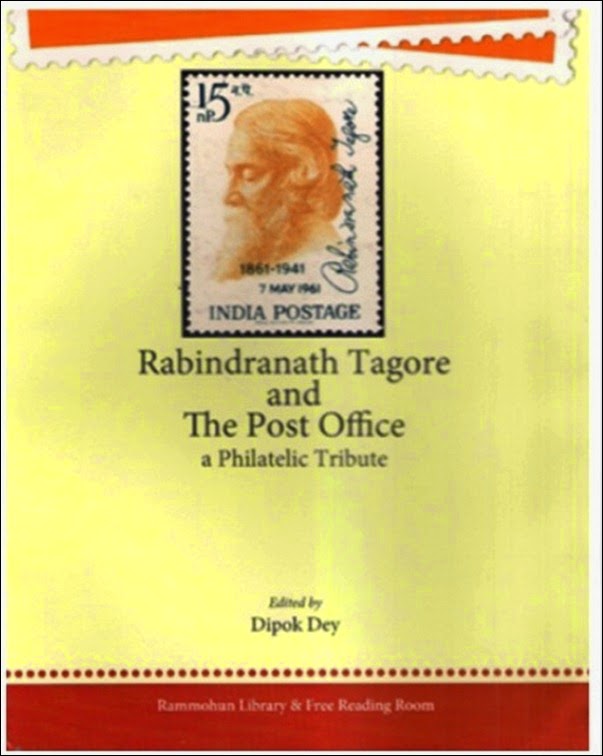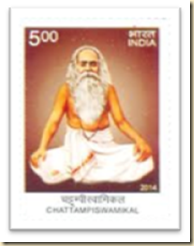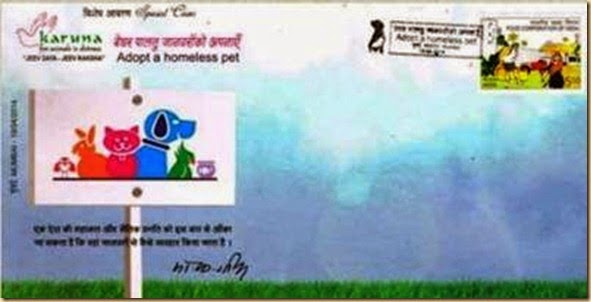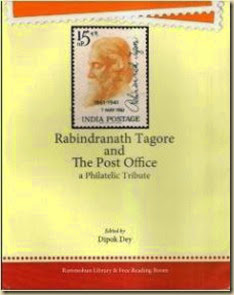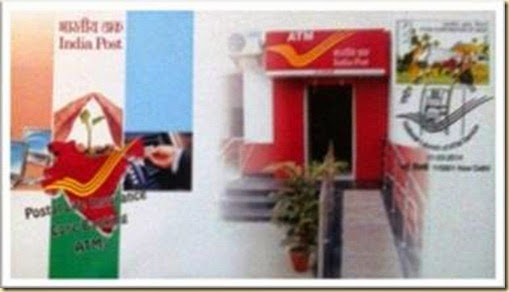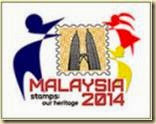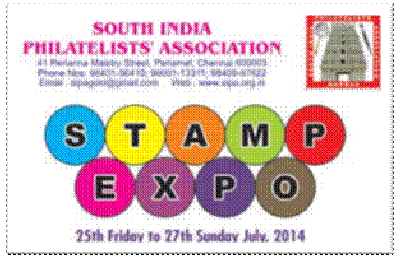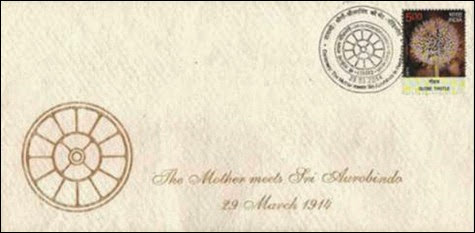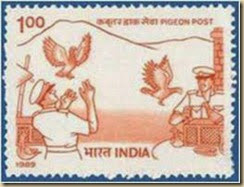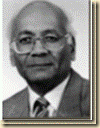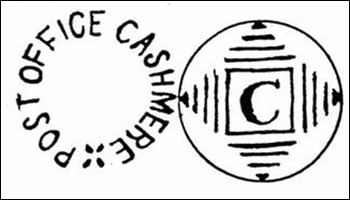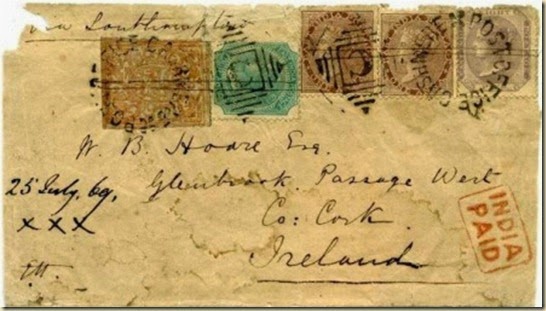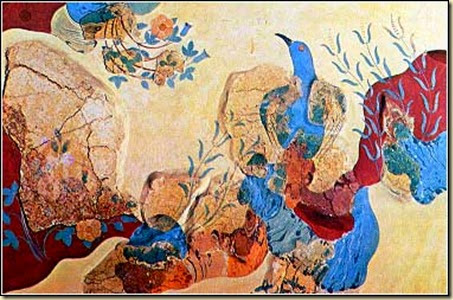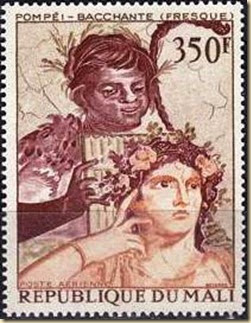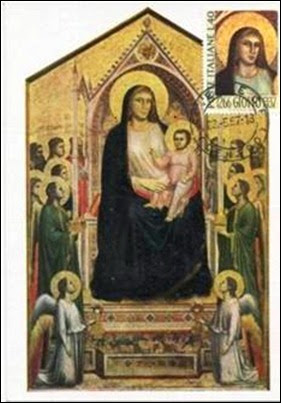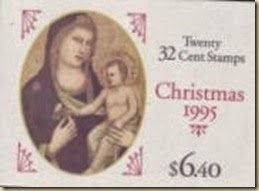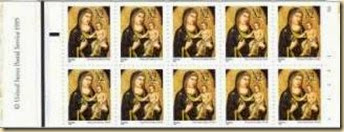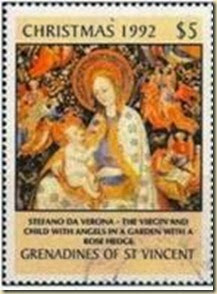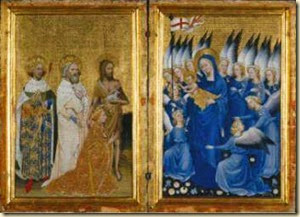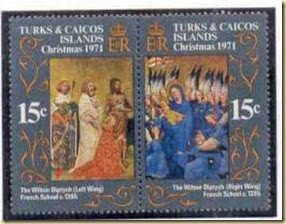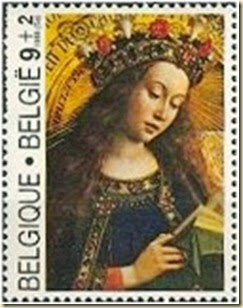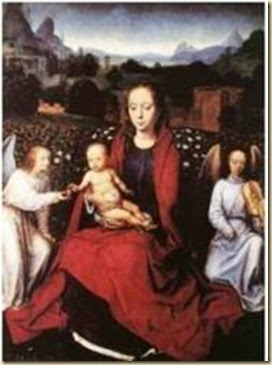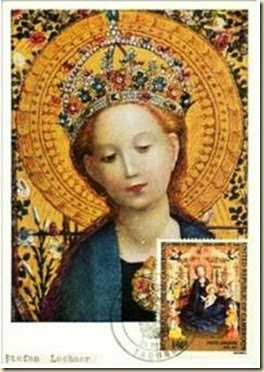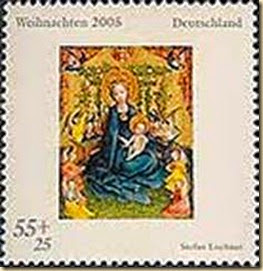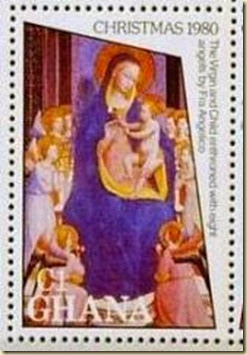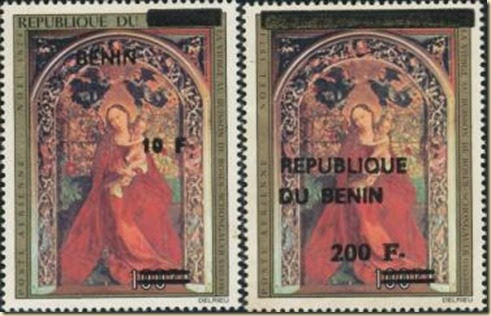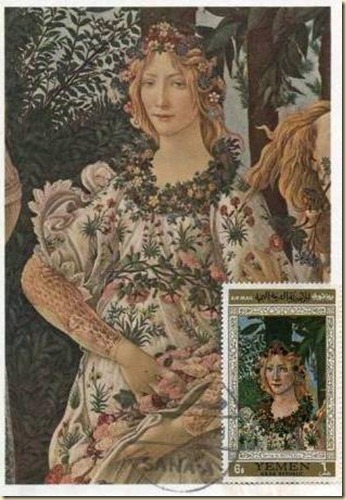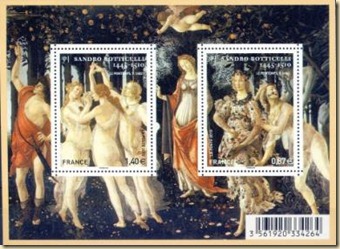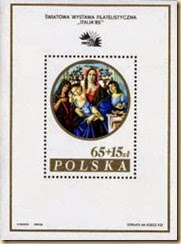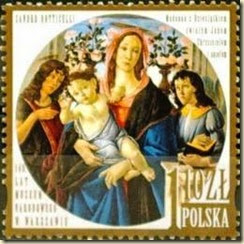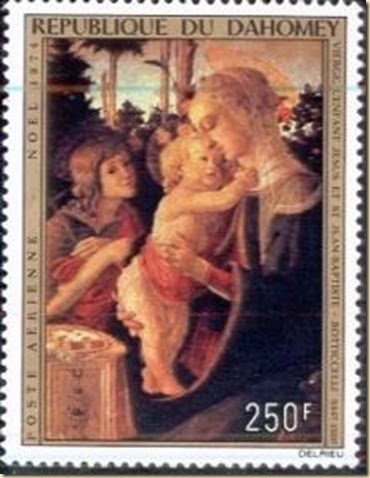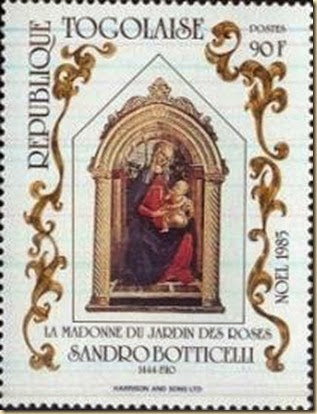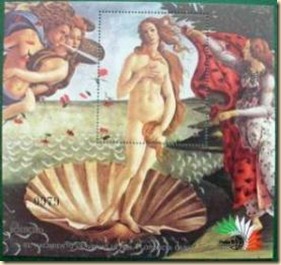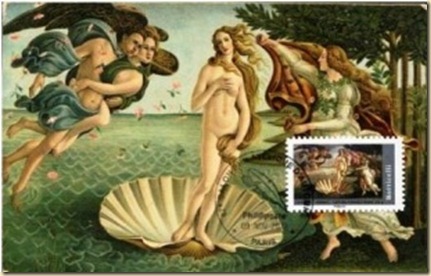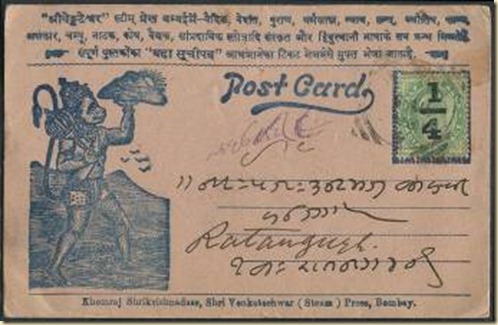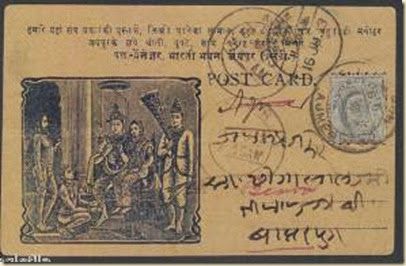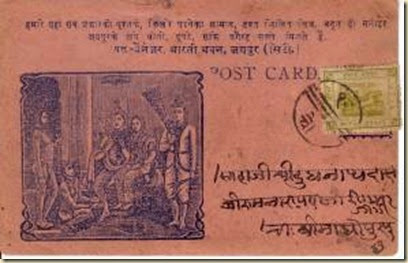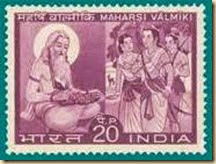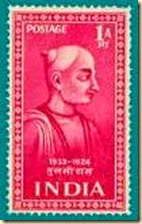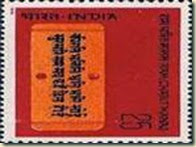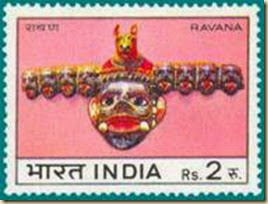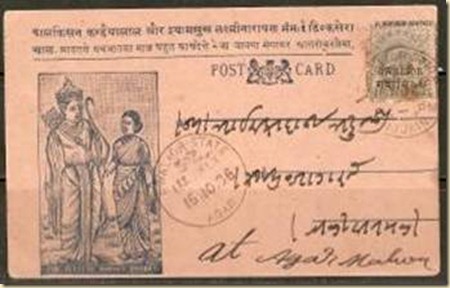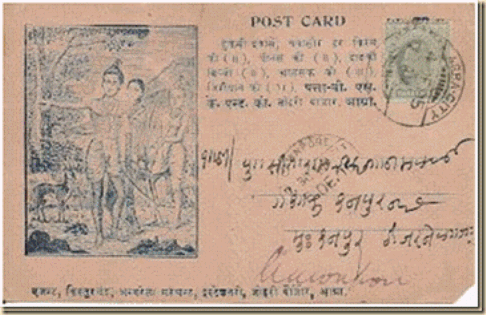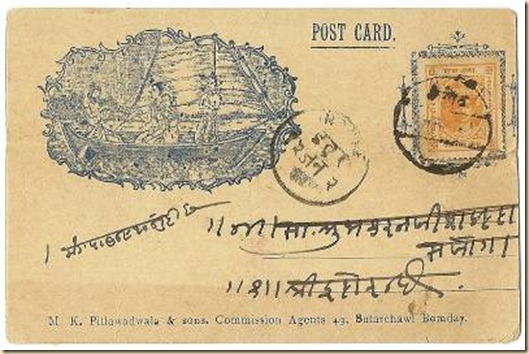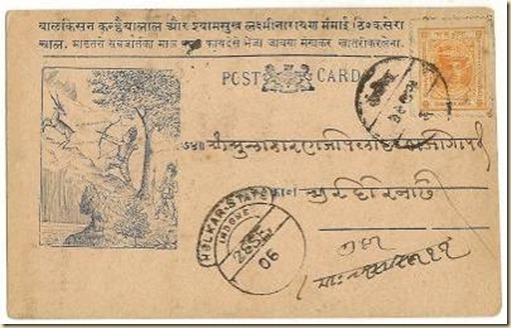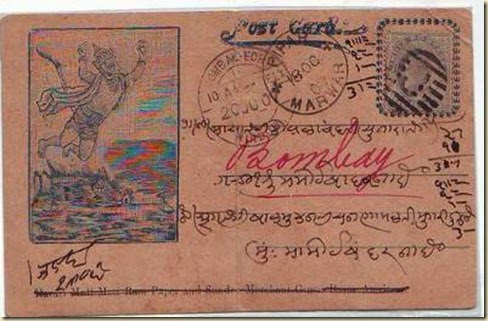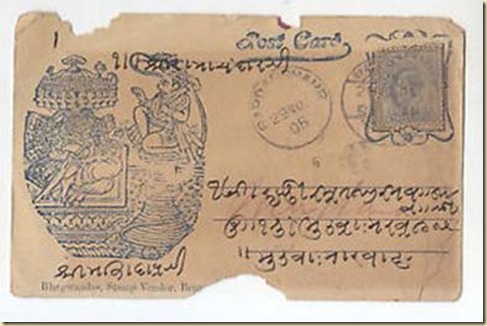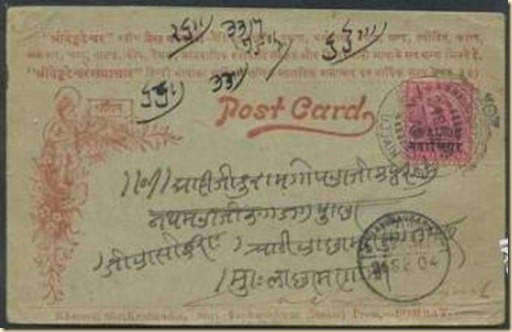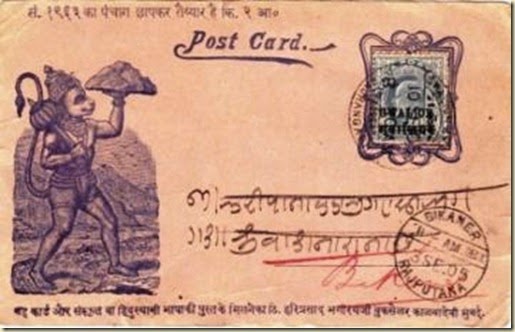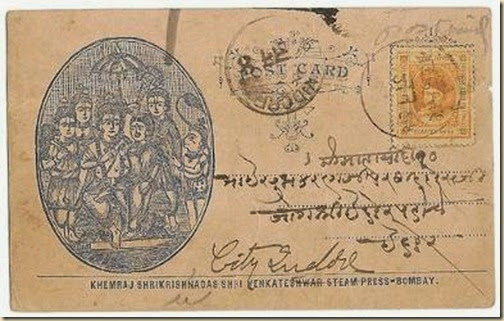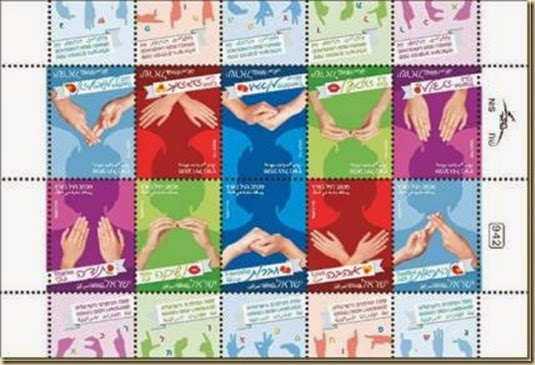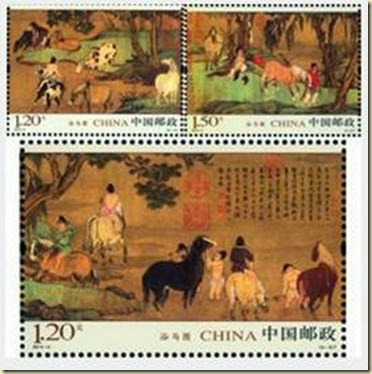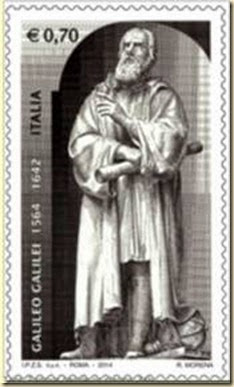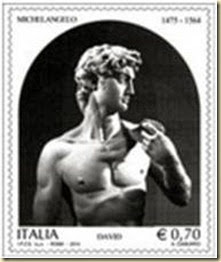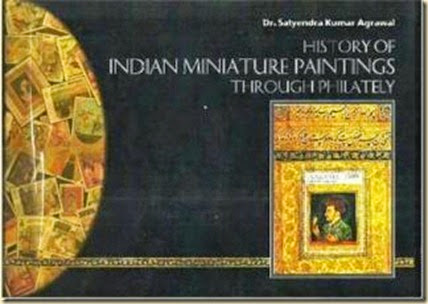Rabindranath Tagore and The Post Office – A Philatelic Tribute is a new book recently published by Raja Rammohun Roy Library and Free reading Room, Kolkata on Nobel Laureate, Gurudev Rabinbranath Tagore’s stamps and covers issued all over the world, edited by noted artist and philatelist Shri Dipok Dey
Dehradun May 2014 Vol. VII Issue # 77
Monthly e-Stamp Bulletin Edited by Jeevan Jyoti for free circulation among philatelists
Readers are requested to send reports of philatelic activities in their area for publication. Short write ups by the readers about their journals, societies, publications and philatelic requirements can be sent for inclusion in this bulletin to j.jyoti9@gmail.com and by post to – Ms. Jeevan Jyoti, c / o Mr. Ajay Srivastav, Wildlife Institute of India, Post Box No. 18 Chandrabani, Dehradun – 248001. India
Note- This bulletin is only for circulation among a limited group of philatelists without any commercial purpose. The bulletin will be sent to the readers only on request. Those who wish to receive it regularly please reply giving the name of your city / country with the subject SUBSCRIBE RAINBOW
Dear Reader,
I am pleased to release May 2014 issue of Rainbow Stamp News. I am extremely happy to introduce a special book, “Rabindranath Tagore and The Post Office – A Philatelic Tribute” released recently in Kolkata on stamps and covers issued on greatest literary genius of India, Gurudev Rabindranath Tagore. This wonderful book edited by Shri Dipok Dey will definitely prove an asset for both philatelists and non philatelists. The illustrations in the book are excellent. It gives a great feeling to go through the beautiful stamps, covers and postmarks issued on Rabindranath Tagore with details. The collection in the book motivates a collector to prepare an exhibit of philatelic items issued by various countries on Tagore !!! This book is a Tribute to the great Indian Poet .
In this issue, read special articles by Mr Naresh Agrawal, Dr Satyendra Kumar Agrawal, Dr Avinash Jagtap and Mr Anil Dhir.
This is all for this month….More in Next issue…
Happy Collecting !
-- Jeevan Jyoti
Contents
· From the Desk of Naresh Agarwal
· Recent Indian Issues
· In The News
· Beginners’ Section
· Specialized Section
· New Issues from Other Countries
· The Lighter Side
· Philatelic Clubs and Society
· Blogs & Websites on Philately
· Editor’s Mail Box
· Promotional Section
· Current Philatelic Magazines - Newsletter
 From the Desk of Naresh Agarwal
From the Desk of Naresh Agarwal
MY STAMP : LACKS PUBLICITY
While continuing my discussion on MY STAMP last month, when I showed my gratitude to DOP for introducing this marvellous method of stamp issuing and also reflected various other aspects connected to MY STAMP, I now feel pity on the DOP for poor implementation of this scheme. Poor implementation clearly means that this beautiful scheme has not reached the public in general so far. People genuinely don’t know what MY STAMP is. We see no publicity of this scheme anywhere in India. In brief we can say lack of sustained publicity is killing DOP’s initiative. My stamp has all the potential to keep department relevant despite rigorous changes brought by the private couriers and Internet. The service though has now available in most of the places in country but there are few who have known and have benefit and fun of it. It appears that like various other appreciable government schemes this too will fade away soon if no proper, consistent and sustained publicity is done.
It is heard form department’s officials that they are relying on mouth–to-mouth publicity which is not enough at all. It is understood that department deals in about 150 services but one must appreciate that this is a unique scheme which touches hearts of every individual and so deserves special attention and budget for its advertisement. The economics of this scheme to seems to be very good from DOP’s point of view..
This scheme is like a hen which hatches golden eggs. But needs to be hatched slowly so that the hen remains alive for long time. Rs. 300/- per sheet seems to be higher. The introductory price in 2011 during INPEX2011 was Rs. 150/- This price seems to be adequate. DOP should think like a Marwari businessmen who prefers to serve at less profit but to more customers. This in turn gives more profit and satisfaction to more customers who not only get better service but that too at low price. More satisfied customers bring in more customers and so create a market for the product.
In my last mail to Supdt.of Post offices,Bilaspur Dn,Bilaspur, I suggested following looking in to general local conditions :
1. Wide publicity in schools…... affixing posters or conducting workshops on MY STAMP.
2. Colleges and universities….. affixing posters or conducting workshops on MY STAMP..
3. Shopping Malls / Super Bazaars……….Banners can be fixed or stalls can be fixed (Commission based ) for promotion and collection of my stamp orders to be delivered either at that point or at Bureau.
4. Petrol Pumps can be good places where the same facility can be provided
5. Good Hotels / Restaurants can have tie up with post office as their clientele can easily support MY STAMP and give good orders. They have regular Kitty party’s, marriage functions, Birthday parties apart from their regular high profile customers
6. Banks like ICICI,HDFC or many other can also give good support to this cause.
7. Various Clubs Societies like professional societies of Doctors (Medical Associations), Chartered Accountants, Industries Associations etc and then Clubs like Rotary, Loins, Inner wheel can also give good business
8. Railway Reservation Counter / railway reservation slips can have advertisement of MY STAMP
9. All the payment receipts for parcels, registered mail, speed post can have slogan related to MY STAMP. MY STAMP slogan slips/labels can be stuck on the post or slogan post marks can be applied.
10. Cinema Halls Screen can be primarily used for advertising MY STAMP
11. All the PDA Account Holders can be asked to go in for MY STAMP
12. Marriage Houses / Palaces can be contacted to promote this facility as they can offer this facility at the time of marriage function. But department will have to have portable system of my stamp
13. Automotive dealerships have good potential to attract MY STAMP aspirants
14. All post offices/sub post offices to be asked to collect orders for MY STAMP. The staff needs to be trained for the same.
15. Banners to be placed at Bid parks and Gardens
16. Paper and E-media to be used. There is need to be regular publicity in News papers and Also on Local TV channels.
17. Invitation and free issuance of stamp on local personality and giving it huge paper and e publicity locally will help creating market.
18. Big Business Houses organizations like may contacted
20. National TV channels to be used for introducing this scheme to the public in general
I understand ,if some of the suggestions given above are adopted suitably looking in to local conditions, the MY STAMP will certainly reach public. In nut shell, to see this scheme flourishing and reach general public in totality, DOP has to think and act differently like businessman and adopt different marketing strategy as suggested above. I am sure in the time to come My STAMP will be proud product of the department.
- Naresh Agarwal : email : nareshkumar1992@yahoo.co.in
Recent Indian Issues
· 11 February 2014 : Central Vigilance Commission – Rs 5
· 25 February 2014 : Hasrat Mohani – Rs 5
· 25 April 2014 : National Council of Churches in India - Rs 5
· 30 April 2014 : 50 years of Govind Ballabh Pant Hospital, Delhi – Rs 5
· 30 April 2014 : Chattampiswamikal – Rs 5
Recent Special Covers
19th March 2014 : Golden Jubilee Celebrations of Shree Rushabdevji Jain Temple, Chembur, Mumbai
28 March 2014 : Golden Jubilee Celebrations of Carmel College, Nuvem, Goa
10 April 2014 : World Homeopathy Day, Vadodara
19 April 2014 : Mahavir Jayanti , Mumbai
19 April 2014 : Adopt a homeless pet, Mumbai
21 April 2014 : 150 Glorious Years of Western Railway , Mumbai
In The News
New Book on Tagore stamps and covers
Rabindranath Tagore and The Post Office - A Philatelic Tribute
Here is a new beautiful book “ Rabindranath Tagore and The Post Office - A Philatelic Tribute “ edited by noted artist and philatelist Shri Dipok Dey. The book has been published by Rammohun Library and Free Reading Room, Kolkata. Rabindranath Tagore was the first Asian to win Nobel Prize in Literature. He has been honoured by various countries on postage stamps. This book gives details with colorful illustrations of all the stamps along with First Day Covers, Postmarks, Souvenir sheets, Miniature sheets, special covers, special postmarks, Booklets, Maximum Cards, Picture Post cards , catch Covers etc. The cover design and layout of the book by Shri Babul Dey is excellent. It is a complete book of philatelic items issued on Gurudev Rabindranath Tagore. This book will be liked by all Tagore lovers as well philatelists.
The first chapter gives “Rabindranath Tagore : A Chronicle : 1861 – 1941 “
The next chapters give details of stamps issued by different countries in alphabetical order. With the details of stamps other description about Tagore’s visit or his special association with the country is also given .
After the chapters of stamps, details of covers, postcards, booklets and Picture Postcards are given. The book is hard bound and the quality of paper and printing is very fine. This nice book will add colors to the collection of philatelists and general readers would highly appreciate this book.
The other details of the book are given below :
Rabindranath Tagore and The Post Office - A Philatelic Tribute Edited by Dipok Dey - Hardbound - Pages 64 - Price Rs 575. - Published by Rammohun Library and Free Reading Room, 267 Acharya Prafulla Chandra Road, Kolkata – 700009. email : rammohunlibraryafrr@gmail.com
 Dipok Dey is a renowned artist and philatelist from Kolkata. He has designed several Indian stamps, special covers and greeting cards issued by India Post. He has written several philatelic articles and edited philatelic books. He is the first Indian to design UN Stamp in 1985. His specialized exhibit on Cinema and printing Technology has been exhibited in many National and International Philatelic Exhibitions.
Dipok Dey is a renowned artist and philatelist from Kolkata. He has designed several Indian stamps, special covers and greeting cards issued by India Post. He has written several philatelic articles and edited philatelic books. He is the first Indian to design UN Stamp in 1985. His specialized exhibit on Cinema and printing Technology has been exhibited in many National and International Philatelic Exhibitions.
Special Cover to mark National launch of ATM Service by India Post - 1st March 2014
The country’s first Post Office Savings Bank ATM was inaugurated in Chennai on 27th February 2014 by Finance Minister P. Chidambaram. On 1st March 2014 two ATM were launched in New Delhi. The department will open 2,800 more such ATMs by March 2015 which is part of its core banking system (CBS) project. The initiative is part of modernisation project under which around 1.6 lakh post offices will be equipped with core banking system by 2015. To mark the National launch of ATM service by India Post a Special Cover was released on 1st March 2014 at New Delhi.
Philatelic Exhibitions
MALAYSIA 2014 - 29th Asian International Stamp Exhibition and World Youth Malaysia 2014
MALAYSIA 2014, the 29th Asian International Stamp Exhibition and World Youth Malaysia 2014 will be held from 1 to 6 December 2014 at the Kuala Lumpur Convention Center. Prof. Sahadeva Sahoo is the Commissioner from India for this exhibition.
Official Website : http://malaysia2014.com.my/
Details of the exhibitions are available at following link :
http://rainbowstampclub.blogspot.in/2014/01/malaysia-2014-29th-asian-international.html
For more info please contact :
Prof. Sahadeva Sahoo
'Saswat', D-3, B. J. B. Nagar,Bhubaneswar 751014
Phone +91674 2432251 Mobile +91 9337103542
email : sahadevas@yahoo.com
BIRDPEX 2014 – International stamp exhibition on Birds
BIRDPEX is an international philatelic exhibition on "birds" that takes place every four years. After Christchurch (New Zealand , 1990), Rosenheim (Germany, 1994), London (United Kingdom, 1998), Leek (the Netherlands, 2002), Nørresundby (Denmark, 2006) and Antwerp (Belgium, 2010), the 7th edition will take place in Poitiers (France)
http://philapoitiers2014.online.fr/
For any info contact email : Jean-Francois Duranceau , 2 rue de Berry, 86170 AVANTON (France) email : jean-francois.duranceau@orange.fr
List of Participants at BIRDPEX 2014, Poitiers
List of participants at BIRDPEX 2014, Poitiers is available at following link .
http://www.mg-o.de/mgobirdpex2014htm
PHILAKOREA 2014 - World Stamp Exhibition will be held in COEX Hall A, Seoul from 7-12 August 2014.
Website : http://www.philakorea.com/
Mr Surendra A. Kotadia is the National Commissioner for India. He may be contacted at following address.
SURENDRA A. KOTADIA
DIMPLE DRUMS & BARRELS PVT LTD , 1119 MAKER CHAMBER – V
221 JAMANALAL BAJAJ ROAD , NARIMAN POINT ,MUMBAI 400 021 INDIA
TELEPHONE + 91 22 22024130/31 MOBILE + 91 98199 03789 FAX + 91 22 22843275 E-MAIL - surendrakotadia@gmail.com
Stamp Expo at Chennai
South India Philatelists' Association is conducting Stamp Expo from 25th to 27th July 2014 . The Stamp Expo will showcase the culture, history, heritage, flora & fauna displayed by postage stamps. There will be limited number of 60 stamp Dealer Stalls from all over India. For more details contact email : sipagold@gmail.com Ph . 9840156410, 9600113311.
Special Cancellation on The Mother's first meeting with Sri Aurobindo at Pondicherry - 29th March 2014
The Mother’s (Mirra Alfassa) arrival in Pondicherry and her first meeting with Sri Aurobindo on 29th March, 1914, was of immeasurable spiritual significance. With Her arrival, there was a mighty mingling of two vast streams of sadhana which Sri Aurobindo and the Mother were pursuing individually. Though Mohter returned home after her first arrival in Pondicherry in 1914, and came back to settle here permanently only in 1920, the first arrival holds special significance for her admirers.
The centenary of the Mother’s first arrival in Pondicherry is also the centenary of her first meeting with Sri Aurobindo. Sri Aurobindo Ashram, Pondicherry celebrated Centenary of the Mother's arrival to Pondicherry and meeting Shri Aurobindo on 29th March 2014 at Sri Aurobindo Ashram. The Department of Posts offered a special cancellation to commemorate the occasion. Shri Mervin Alexander, Postmaster General, Chennai, released the special cancellation at the post office connected to Sri Aurobindo Ashram. The special cancellation can be availed on any mail posted at the Ashram Post Office for two months, on request.
COIN / CURRENCY EXHIBITION AT THRISSUR,KERALA
MUDRA 2014
Thrissur Coin Society, is organizing a National Coin / Currency
Exhibition on 17th &18th May,2014. The Venue will be Pandisamooham Hall,Thrissur,Kerala For reserving dealer’s booth Contact Mr. Dinesh. Mob:No 0963391166.
Philatelist gifts stamps to school
 Mr RD Mathkar, a philatelist from Mumbai donated 100 packets of stamps to Thakur Shyamanarayan High School, Mumbai for the promotion of philately. Every year Mr Mathkar donates stamps to a school to promote the hobby of philately among school children. Eminent philatelists who helped him in the contribution are Mrs Damyanti Pittie, Mr Suketu Jhaveri, Mr Hansubhai Kapadia, Mr AT Haji, Mr Rajan Jayakar, Dr Avinash B, Jagtap, Mr S Farrukh Shah, Mr Ashokbhai Mehta and Mr Bansilal M. Shah.
Mr RD Mathkar, a philatelist from Mumbai donated 100 packets of stamps to Thakur Shyamanarayan High School, Mumbai for the promotion of philately. Every year Mr Mathkar donates stamps to a school to promote the hobby of philately among school children. Eminent philatelists who helped him in the contribution are Mrs Damyanti Pittie, Mr Suketu Jhaveri, Mr Hansubhai Kapadia, Mr AT Haji, Mr Rajan Jayakar, Dr Avinash B, Jagtap, Mr S Farrukh Shah, Mr Ashokbhai Mehta and Mr Bansilal M. Shah.
Unforgettable Memories
Mourning Cover of Khushwant Singh
I am sharing here memories of noted philatelist, Mr Anil Dhir with famous Indian journalist and writer, Khushwant Singh who passed away last month at the age of 99. He once requested Mr Dhir to make a mourning cover after his death.. Here is a story of the mourning cover which Mr Dhir released recently … - Editor
With Malice Towards None
I had met him for the first time sometime way back in 1982, when he had come to Bhubaneswar for the Jubilee celebrations of the local vernacular daily. Khushwant Singh had planned a trip to Konark and I was sent along as a guide. His host had thought that I, being a Punjabi myself, would be the appropriate person to give him company. However I kept this fact a secret and did not tell him that I could speak Punjabi. I can still remember his caustic and witty comments on seeing the erotic sculptures on the walls of the Sun Temple. He uttered a few unrepeatable quips in Punjabi to his wife who had accompanied us, which I cannot write. After we had done a circumambulation of the temple, he chuckled at me: “You Oriyas look so simple, but this is what all you had on your minds centuries ago.”
I kept bumping into him quite frequently in the next few years. I once had the opportunity to sit next to him on a flight, he was not a good conversationalist but still then I told him a few jokes, two of which he liked. He took out a big diary and wrote them down. I saw them in his column a few weeks later, he had duly acknowledged me.
Khushwant Singh was known for his larger than life image. He was an author, journalist,columnist and joke-teller. I was an avid fan of his writings and always wanted to write like him. More than half a dozen times, I had sent his pieces of my writings for his comments, but these went ignored.
When Saddam Hussain was killed by the Americans, I had made a few mourning covers and sent them to George Bush and Tony Blair. The story had been picked up by the press both here and abroad. It carried the picture of the Cover and a short write up of my collection of Mourning Covers. Khushwant had read the piece in the Times of India and two weeks after it was printed I got a cryptic letter written on a post card. His words were: Dear Mr. Dhir, What a morbid yet fascinating hobby you have-collecting mourning covers and death letters. I am interested in seeing your collection. Call on me when you come to Delhi.
I immediately acknowledged the post card and wrote to him that I would be in Delhi the next month and would carry my collection. I soon received another post card with a cryptic one liner: “Ring me up before you come,” along with his phone number.
I rang him up with a lot of trepidation. I was told that he picked up the phone himself and was a stickler for time. In case one was late by even five minutes of the appointed time, he would refuse to meet him. He did pick up the phone and I reminded him of his letter. “Come this evening, he said, at 7 sharp.” He took my phone number.
When I returned to the hotel in the evening, there was a note in the reception which said the Khushwant Singh had called and said that the appointment for the evening had been cancelled. I was very disappointed and heart broken. The next morning I rang him up again and he apologised and told me that he had some surprise guests from abroad. When I asked him if I could come this evening, there was silence at the other end. “Can you come just now?” he asked. I replied in the affirmative and just half an hour later I was standing outside his Sujan Singh Park house, clutching my Mourning Cover Exhibit.
There was a sign which said "Please do not ring the bell unless you are expected." I timidly pressed the bell button and the small Sardar appeared at the door and with a smiling face asked me to come in. He was all alone in the house and excused me for not being able to give me a cup of tea. “It is too early for something stronger” he said.
He was soon sitting on his sofa, his feet on a stool, a blanket draped around him to beat the late February chill. The walls of his spacious living room were lined up with voluminous books. There were papers everywhere, tokens of the scholarship that had produced fine translations of Urdu poetry and more than sixty highly regarded books, despite his claims to be no scholar. I sat on the carpeted floor and handed him the exhibit page by page. For the next one hour he went through the entire collection, questioning me about the covers, stamps and history. He peered at the covers and stamps closely, pointing out the details and I was awestruck by his knowledge of the subject. He told me that he had brushed up his knowledge on Mourning Covers after he had read the article and found it fascinating. After a good hour, as I was packing up my collection, Khushwant Singh told me abruptly “Make a mourning cover for me after I die”.
“You will outlive me, I said, I will never get the chance.”
“Nonsense, promise me that you will make a cover after my death. It will happen very soon. You won’t have to wait long”, he said with a premonition which disturbed me.
After extracting the promise from me, we proceeded to decide on what the cover should carry on its face. He got up and went to a nearly bookcase from where he got an album with many black and white photos. He pointed out a few from his youthful days, but we finally decided on his iconic trademark of the Sardar in the bulb which appeared in his celebrated column- With Malice towards One and All.
Appearing first in Illustrated Weekly and then Hindustan Times, both the papers whose editor he had been at some time, his column was widely followed and had kicked up quite a few controversies. It ran for years, featuring a cartoon of him sitting guru-like inside a light-bulb, with a stack of books beside him, a few girlie magazines and a whiskey bottle and glass. It had been drawn by Mario Miranda, and had first appeared in the editor’s page in the Illustrated Weekly of India.
For his frank and acerbic writings, Khushwant Singh received a lot of abusive mail. He showed me one envelope from Canada which was simply addressed to ‘Khushwant Singh, Bastard, India’. The letter had been delivered by the post office, a fact which made him proud. He had treasured the envelope for years and had shown it to many visitors.
I had taken along with me copies of two of his books; ‘Train to Pakistan’ and ‘A History of the Sikhs.’ He autographed them grudgingly and then bade me goodbye. This was the last time I met him.The grace notes of that mellow afternoon in his study have always stayed with me. I subsequently called him up at least half a dozen times during my trips to Delhi, but each time he refused to meet me. He had grown old and reclusive and met very few people.
Khushwant Singh, died on the 20th of March 2014, aged 99 years.
He was one of the most humble, spartan, puritanical, disciplined and generous man I have ever met.I particularly admired him for being fearless in expressing his views in his writing and speech.He had been awarded the Padma Bhushan in 1974 but returned the decoration in 1984 in protest against the storming of the Golden Temple in Amritsar by the army. He was a rare character, who lived his life his way. Despite openly proclaiming to be a non-follower of any religious ceremony, he has written more about the history of Sikhs and translated more Sikh scriptures than any other Sikh author.
During his lifetime, Khushwant Singh was keen on burial because he believed that with a burial you give back to the earth what you have taken. He had requested the management of the Baha’i faith if he could be buried in their cemetery. They had agreed but imposed a few conditions which he found unacceptable; hence he was cremated the same afternoon.He had told his family not to have any religious ceremony after his death.
There must be many who must have mourned Khushwant Singh, countless men and women whose lives he had touched during his 99 years. Who was the real Khushwant Singh? Was he the inspired translator of Guru Nanak’s hymns or the writer of ribald and dirty joke books? Was he the erudite historian who wrote some of the most enduring books on the Sikhs and Punjab, or the bestselling author of full-blooded novels and short stories with many sexy passages? All his different avatars have one common thread—his total lack of hypocrisy.
I have kept the promise that I had made to him. The Black Bordered Mourning Cover was released by me last week. Many philatelists all over the country have written to me asking for a cover. The Sardar in the bulb has appeared for one last time. Adieu Khushwant Singh. Heaven is a more pleasant place now, with the Sardar telling his ribald jokes.
- Anil Dhir, email : anildhir2k5@hotmail.com
N.B.: A very few number of covers are available for philatelists who may please contact me.
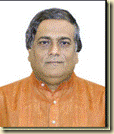 Anil Dhir is a noted philatelist from Bhubanehwar. He has written several books on stamps. He is known for his specialized collection of Mourning covers “ Edged in Black”.His other philatelic collections include Indian Classics and Great Britain. His highly appreciated short film “ The Last Post “ has won many awards at different exhibitions.
Anil Dhir is a noted philatelist from Bhubanehwar. He has written several books on stamps. He is known for his specialized collection of Mourning covers “ Edged in Black”.His other philatelic collections include Indian Classics and Great Britain. His highly appreciated short film “ The Last Post “ has won many awards at different exhibitions.
Beginners’ Section
Do you know ??
Pigeon Post
Pigeon post is the use of homing pigeons to carry messages. Pigeons were effective as messengers due to their natural homing abilities. The pigeons were transported to a destination in cages, where they would be attached with messages, then naturally the pigeon would fly back to its home where the owner could read his mail. Pigeons have been used to great effect in military situations.
Postal Siblings
In the amazing world of Philately, every day a new birth of stamp, Folder, FDC or cancellation is taking place. Mostly they all are different and have their own individual independent identity. However, sometimes we find identical similarity in two or more cases. In such cases, we find similar designs with slight variation in colors, sizes, papers, designs etc in some of the Stamps, Folders, FDCs, Cancellations, Slogans etc. These types of similarities in different postal items remind us of siblings who are twins, triplets or quadruplets.
Specialized Section
Some Remarkable Cancellations and Postmarks – 19
Renouf Type 9d Cancellation for Cashmere
Duplex Cancellation for Cashmere (Renouf Type 9d)
Renouf in his monography on Early Cancellations of British India has entered the only duplex cancellation from Cashmere as his Type N0.9d, although his Duplex Type C is meant for Madras Circle. So I have to deal with this type separately, retaining its Renouf N0. 9d. D.R. Martin has not mentioned this cancellation, as the caption of his work “Numbers in Early Cancellations 1855 – 1884” has no place in his book, as it does not include any number/s. Jal Cooper describes this type under his type N0. 8c, with the comments “This Type is also found with capital letter “C” inset, and was used by “Cashmere Post Office” of Kashmir State. Other letters found in this type are “DP” (District Post?), “DR” (District Registration or Receiving Office?) and “FF” (Abyssinian Field Post). Examples of all the four types are extremely rare”.
Duplex Cancellation for Cashmere (Renouf T. 9d )
1869 Cover to Cork (Irland) with one Anna, brown-orange (Jammu& Cashmere) used with 8 pies+ 2x1 Anna (QV) and 4 Annas (QV) cancelled by “POST OFFICE : CASHMERE =C “ (Renouf Type 9d) duplex obliterator, Back-stamped “RAWALPINDEE/JL 30/69” + “LAHORE/S/ JUL30/69” (Renouf T. 60), “EX / BOMBAY/ AU 5/69” and Cork Arrival Mark of 14 Sept. 69.
- Dr Avinash B Jagtap : email : abjagtap@hotmail.com
Rose Paintings on Stamps (Pt 1)
© Dr.Satyendra Kumar Agrawal
Next to the human form, roses have been one of the most favorite painting subjects used from the dawn of the civilization. In earlier paintings roses were often used as adornment. Marked influence of religion during Gothic period, also painted roses either as adornment or as a religious symbol and in Baroque period, roses are found as portraits or in still lifes. They were often the main subject of paintings during the Realist and Impressionist periods.
“The Fresco with Blue Bird” (c1900-1700B.C.) discovered by the British archaeologist, Sir Arthur Evans in 1900, during an excavation at Knossos, Crete is the oldest painting of rose found ever. He described the fresco as “ To the left, for the first time in Ancient Art, appear a wild rose bush, partly against a deep red and partly against a white background, and other coiling sprays of the same plant hang down from a rock work arch above. The flowers are of a golden rose colour with orange centers dotted with deep red.”
“The Fresco with Blue Bird” (c1900-1700B.C.)
In AD 79, the fresco paintings of Damascena Bifera roses, Mali1974, were found in the ruins of Pompeii. This rose was used in the worship of Aphrodite.
“Rose Crown”
The collapse of Rome and its Empire marked the end of the first Golden Age of the rose which spent the “grey” Middle Ages in shadows. Without Rome’s dissipated celebrations the “Queen of Flowers” was condemned to oblivion and only survived the following centuries because its medicinal and cosmetic properties secured it a place in some convent and monastery gardens.
There were some oriental drawings of roses circa the 10th century, but the rose was largely ignored until the Middle Ages.
The rebirth of Renaissance in the arts in general, and paintings in particular, marked an important break from the Middle Ages. But it was by no means a sudden revolution more a gradual process which in Italy dated back to the fourteenth century.
Giotto is renowned as the founder of Renaissance art. The striking realism and dramatic power of his works came as a revelation to his contemporaries and heralded a new era in the development of painting. He was a master of tempera as well as fresco. “The Ognissanti Madonna” c1310 has an incomparable regal grandeur, available on a beautiful S/S of Malta1993. It takes its name from the Florentine church of Ognissanti (All Saints) where it adorned the high alter. The foreground angels hold vases of lilies and roses, flowers symbolic of the Virgin. The original painting is kept in Uffizi, Florence.
“The Ognissanti Madonna” c1310
Another example of roses in Giotto’spainting; “The Madonna and Child” c 1320-25 in which Madonna is holding a rose in her hand is featured on an issue of USA 1995. It is a part of a polyptych kept in National Gallery, Washington.
“The Madonna and Child” c 1320-25
Stefano da Verona is another notable artist of this period. His painting “Virgin and Child with Angels in a Garden with a Rose Hedge” is depicted on an issue of St. Vincent Grenadine, 1992. His style embodies a decorative elegance and an interest in minute detail that derive from northern European painting.
“Virgin and Child with Angels in a Garden with a Rose Hedge”
Here the Virgin is portrayed as the Madonna of Humility: instead of having enthroned, she is seated on a cushion on the ground. In the sky above her appears God the Father with a scepter and the Holy Spirit in the form of a dove. The rose garden symbolizes the purity of the Virgin, while the music making angels evoke the refined and grace-filled court life of the very end of the Middle Ages.
“The Wilton Diptych” is one of the treasures of early Gothic paintings placed in the National Gallery of Great Britain. It is available on a se-tenant pair of Turks and Caicos Is, 1971. The diptych was commissioned by Richard II who is portrayed in prayer and surrounded by allies, being presented by three saints to the Virgin and Child. The bright colours in the painting have faded. The pink roses on the heads of the angels and scattered on the ground would have been Rosa gallica and originally painted deep red in colours. It is a 14th century unknown Anglo-French artist’s painting.
“The Wilton Diptych”
The school of Bruges was ever popular in fifteenth century. It got off to a flying start with the incomparable art of Jan van Eyck (1390-1441). He invented the technique of oil painting which allowed intricate details of a picture to be added until a complete image of the subject had been built up. Belgian Christmas issue of 1986 depicted one of his paintings of Madonna with a crown of roses.
“Madonna with a crown of roses”
The formulaic but appealing painting of Hans Memling was conservative, technically highly skillful, and spiritually reassuring. He was the other side of the coin of later Netherlandish paintings displaying anxiety or aristocratic introspection. His “Madonna in a Rose Garden” appeared on an issue of Cook Is. 1992, is a good example of rose adornment.
“Madonna in a Rose Garden”
Stefan Lochner was German late Gothic painter, considered to be the greatest representative of the school of Cologne. He is known primarily for his highly mystical religious paintings. His “Madonna of the Rose bush “c1440 is featured on Cameroon 1972 and Germany 2005, is a beautiful example of rose decoration in early Gothic paintings.
“Madonna of the Rose bush “c1440
Other paintings of this period, where roses are used as adornments, available on stamps are “Virgin and Child with St. Dominic, John the Baptist, Peter Martyr and Thomas Aquimas” , c1429, Ghana 1980 and Republic Central Africa 1980 , Cameroon 1974 and “Madonna of the Rose bush” by Martin Schongauer, c1473 depicted on Dahomy 1974.
“Virgin and Child with St. Dominic, John the Baptist, Peter Martyr and Thomas Aquimas”, c1429
“Madonna of the Rose bush”
During Renaissance period, Sandro Botticelli was well known for use of roses in his work. “La Primavera”, San Marino 1972, “Madonna with Child”, Poland1985&2002, “Virgin and Child”, Dahomy1974, “Madonna in Rose Garden”,Togo 1985, are some of his notable paintings where roses are used as adornments.
“La Primavera”
“Madonna with Child”
“Virgin and Child”
“Madonna in Rose Garden”
Symbolic use of roses can be best seen in the paintings of two of the great Renaissance artists, Sandro Botticelli and Albrecht Durer.
It is in Greek poetry and legend that the symbolic nature of the rose is first explored. The most famous is probably that surrounding Aphrodite (Venus), goddess of love. “The Birth of Venus” is the most famous painting of Botticelli featured on many issues of different countries e.g. Ajman , Antigua 1980, Oman , Paraguay, Uganda ,Yemen, Antigua 1980 and France 2013, Venus (Aphrodite) is shown rising from the sea with the white roses that are associated with her purity falling from her like foam from the waves. As in Botticelli’s “Carnation of Virgin”, falling roses also symbolizes the God’s divine love.
“The Birth of Venus”
It is interesting to note that only a very limited selection of roses was generally depicted in earlier paintings. Rosa centifolia is by far the most commonly represented with only occasionally other species such as Rosa alba maxima, Rosa foetida and Rosa bicolour or R-moschata autunmalies are painted. In Botticelli’s “Primavera” and “Birth of Venus” rose petals are blowing in the wind are R-alba and R-centifolia both of which are original species.
-Dr Satyendra Kumar Agrawal : email : rosephila@hotmail.com
BRITISH INDIA BAZAR CARDS
MIRROR OF HINDU MYTHOLOGY
( PICTURING RAMAYANA AND LORD HANUMAN IMAGES ONE OF THE HEROES OF
RAMAYANA AND THE IMAGINATION OF MODERN HINDU RELIGIOUS IDENTITY )
By Naresh Agarwal
India 1906 Advert Bazaar Card shows Hanuman God carrying a mountain
BRITISH INDIA BAZAR CARDS :
Stamps are considered as mirror of art, culture, history, religion, mythology and other aspects of any country or society but it is not only stamps but other postal material and stationery also shares their part for the same purpose. Various philatelic materials depict and project various such aspects through the quotes, slogan, text or pictorial advertisements, vignettes printed on them and also through cancellations, labels and private text and sketches drawn / written on them.
British India period around the start of 20th centaury saw a great revolution in changing trends of postal cards which were in immense use during that period. Postal cards gave new direction to postal culture and gave new dimensions to the utility of this mode of postal communication for various social, religious, business promotional and propaganda activities. Apart from those which had pre paid printed stamps issued by postal administration, that period saw a new culture of substantial use of private printed postal cards. Such post cards were developed mainly by the merchants of major cities of all over India who advertised their products or business through text or pictorial matters printed on the either side of the post cards or postal covers which used postal stamps affixed on them for payment of postage.
India 1905 Bazar Picture Postcard -Hanuman GOD
1900-30 "Bazaar" cards and covers were in fact illustrated advertising postcards and envelopes from various merchants in larger cities (Bombay, Delhi, Madras, Poona City, etc) promoting their products. These private printed post cards also showed printing of various pictures/ glimpse of various religions of India which were either printed by individual merchants / traders giving specific quotes and pictures or were also available in market with some standard pictorial printing done on either side of the cards. Such private printed post cards which were also on common sale in the market for usage even by non- merchants. Because those cards were mainly used by the merchants of bazaars of India for their business transactions and communication; the cards were known as bazaar cards.
Lord ram and His wife Sita : British India Bazaar 1906 Postcard
Some of the cards had pictures of heroes of various mythological epics of India showing various deities, gods, scenes / images of the episodes of the epics. These cards certainly helped in promotion of religious awakening and enthusing religious spirits in India. One will certainly see a consideration of the relationship between Indian bazaar art shown on bazaar cards of that era and the formation of a modern, pan-Indian Hindu religious identity. It is seen that the popular, mechanically reproduced lithographs of Hindu mythological heroes have attracted more attention than they have so far received from scholars of religion.
While some scholars in other fields have written politically about these images but one should take seriously their religious genealogy and treat them as vernacular religious texts where these images act as sources of insight into the formation of a modern Hindu religious identity. It is assumed that there is such an entity as Hinduism that is “Sanatana Dharma”
A close study of such cards revealed that there was a huge variety of such cards which highlighted Hindu Mythology on them as one could see the glimpse of Heroes of Ramayana, Mahabharata, various Hindu deities and gods & scenes / images of various other epics on the pictures imprinted on the cards covering partial, half or in some cases full side of such the cards and covers. These prints were similar to business card or letterhead known as ‘Corner Card’. It usually included a return address. These Indian Bazaar Cards also falls in this category.
Ramayana
Rama and his wife Sita, seated, with Rama's brother Lakshmana fanning them, and Hanuman, the Monkey God, kneeling in front of them. From the great Hindu epic, the Ramayana
Ramayana has been the main epic of Indian mythology and is followed by every Hindu. The main story of the Ramayana is about Lord Rama. In short the Ramayana is about Rama who was born in a royal family and was supposed to be the king, but because of his step- mother, he was forced to exile from his kingdom for fourteen years. During this period his consort Sita was kidnapped by a demon called Ravan, who was the king of Lanka. Rama with the help of his brother, Lakshman, and an army of monkeys under the leadership of Hanuman, rescued Sita.
Valmiki wote Ramayan in Sanskrit Sant Tulsidas wote Ram Chritmanas
Ramayana was originally written by a sage Valmiki in the Sanskrit language and later on it was translated into other languages in different versions. Sant Tulsidas wrote Ram Chritmanas giving details of deeds of Ramayana in poetic form. The main story of the Ramayana is about Lord Rama. In short the Ramayana is about Rama who was born in a royal family and was supposed to be the king, but because of his step- mother, he was forced to exile from his kingdom for fourteen years.
But the Ramayana isn't only about Lord Rama and his attempt to rescue his consort Sita. Ramayana is also about devotion, loyalty, family roles and respect to elders.
The Ramayana does not begin with the life of Rama, but actually with the people on earth who suffered from the demon named Ravan, a cruel king who terrorizes the people of earth.
Ravana : The Villain had ten faces
Rama gets married to Sita. Sita is an adopted daughter of another king. In order to win her hand, he won the contest of bending a bow, which belonged to Lord Shiva.
HINDU DIETIES RAM AND SITA
BAZAR CARDS 1906-TWIN COBRA OVERPRINTS- SNAKE CANCELLATIONS OF GWALIOR,
King Dasrath intended to inherit his kingdom to his eldest son, Rama. But Sumitra another wife of Dashraths was provoked by her maid asks for exile of fourteen years in forests to Rama and her son Bharat to heir kingdom. King Dasrath who is in great dilemma and pain, eventually bows to her demands
Rama accepts his father's decision without any argument. He along with his wife moved out for exile. His brothers Lakshman also decides to join his brother in exile. They moved in to forests, crossed rivers..
Bazar card 1905 - Rama’s Exile : Ram and Laxman,Sita roamimng in forests.
They came across various demons. There in one forest,a female demon, Surpanakha fall in love with Rama and she tried to seduce him. Rama being a loyal husband refused to her flirts, so she tries to kill Sita. At this point Lakshman took his sword and cut the demon's nose. She went to her brother, Ravan, and told him of the disgrace that happened to her. Ravan decided to avenge this humiliation by kidnapping Rama's wife Sita. He even noticed that she is very beautiful and desired her.
Ramayana Boat Imag : India Indore State 1907 illustrated Bazar Card
To kidnap Sita, Ravan planted a beautiful deer near Rama’s hut in forest which Sita saw and urged Rama to get it. Rama ran after deer to get it. Later, Laxman also followed rama. And then, Ravna kidnapped Sita and flew to Lanka with her and placed her in a garden.
Ramayana Archery : Ram and Laxman chasing deer as requested by Sita Mata
Indore State 1906 illustrated Bazar card
When Rama returned, a vulture who had fought Ravna to rescue Sita, was found dying told them that Ravan kidnapped Sita. Rama and Lakshman decided to find out Sita.
RAMAYANA AND HANUMAN :
Rama and Lakshman needed an army to find and fight Ravan and they got this help from the monkeys. The king of monkeys who was exiled by his brother got Rama's help to fight and slain his brother. After regaining his throne the monkey king assigned one of his commanders, Hanuman to serve Rama in his assignment to find Sita.
Lord Hanuman could fly: Flying over Rawana’s Sri lanka : Bazaar King Edward Postcard
After reaching Lanka, Hanuman met Ravan who did not offer Hanuman a chair to sit. Hence Hanuman created his own thorn by extending his tail long enough and then sitting in front of Ravana.
India Bazaar Card 1905 – Ramayana image : Ravana surprised as Hanuman sits on his elongated/extended coiled tail
Ravana was shocked to see this and called his demons to set Hanuman's tail on fire. When Hanuman went to Lanka Ravana's soldiers tied Hanuman's tail with rags fabrics and Hanuman made the tail longer and longer. The exhausted demons set fire to his tail.
Now it was Hanuman's turn he jumped all over Lanka setting the entire city ablaze with his tail still on fire.In the fight between Ram and Ravana to free Sita, Ravana made an assault on Ram Seeing this, Hanuman, roving his club, came close to Ravana. To show the might of Hanuman, he did not hit Ravana with his "Gada", the Club, but gave a big blow with his free hand. Ravana's entire body and his ten heads were terribly shaken.
Hanuman who was capable of flying, flown to Lanka and found Sita in Ravna’s garden guarded by female demons, in a depressed mood. He proved to her that he was Rama's messenger and offered to carry her back.But to vindicate her honor she preferred that Rama himself should rescue her. Hanuman promised that Rama would come and rescue her.
Lord Hanuman Ji reached Sri Lanka
India Gwalior State QV 3p on illustrated Bazar Card 1904
After Hanuman's return, Rama planned his way to reach Ravan's island. Rama and his advisers planned a bridge to Lanka in the sea with trees and rocks from forests and arrived Lanka and offered Ravna a peaceful solution but Ravna’s refusal set a war in which even Rama and Laxman got hurt. The monkeys also began to get weak because Ravan's forces use biological weapons, which weaken their senses. So a medical expert in Rama's forces claimed that to neutralize that a special herb named Sanjeevani booti was required which existed in a far away mountain, named Mahodaya (Dronagiri in Himalayas).
Hindu Deity Veer Hanuman :Checking Herbs to find Sanjeevani Booti
BAZAR CARDS-1905 TWIN COBRA OVERPRINTS- SNAKE CANCELLATIONS OF GWALIOR
Hanuman flew to that mountain and found out that the mountain was full of different herbs, so he brought the whole mountain to Lanka. Slowly the forces got back to their senses.
Bazaar Card 1905 : Hanuman Ji carrying the Sanjeevni Parvat
Eventually after many battles Ravan faced Rama and after two continuos days of battles Rama kileds Ravan and visited Sita. But the Ramayana does not end here. The fact that Sita lived in another man's palace caused some rumors about her chastity. She was obliged to take a fire test in which she sat in a fire but came out unharmed and therefore was purified from charges.
Lord Rama with his brothers, wife and Sri Hanuman
India Indore State 1907 illustrated Bazar Card
In the original version of the Ramayana, after Rama and Sita returned to Ayodhya, the capital of Kosala the rumors about Sita's adultery in Ravan's captivity continued and therefore the people disrespected her. So Rama, who was now the king, decided to banish Sita from his kingdom. In the forests she met a sage named Valmiki, who later on wrote the Ramayana. In Valmiki's ashram Sita gave birth to two twins of Rama, Lav and Kush. Those two children learnt from Valmiki to sing the Ramayana as a poem and they went everywhere and started telling everyone the Ramayana, meaning Rama's story. They even arrived into Rama's court and told him his story and so Rama recognized his sons. He brought back his wife Sita who decided to prove her loyalty to Rama by asking Mother Earth to swallow her if she was loyal to Rama and so Mother Earth to testify her loyalty, opened up and swallowed her and Sita disappeared into earth. Later on Rama himself jumped in the river to end his life, followed by many.
: Naresh Agrawal , email : nareshkumar1992@yahoo.co.in
New Stamps from other countries
Israel
8 April 2014
Israel Post issued a stamp sheet of 10 definitive stamps on Israeli Sign Language. Israel is home to some 750,000 people who are deaf and hard of hearing, approximately 15,000 of whom use sign language. The signs that appear on the stamps are presented as images comprised of a hand shape and the location of the sign. The tabs of the stamps also show different expressions of sign language.
China
1 March 2014
Scroll of Bathing Horses
A horizontal silk scroll, the Scroll of Bathing Horses is a colored painting by Zhao Mengfu of the Tang Dynasty, measuring 28.5cm wide and 154cm long. It is now kept in the Palace Museum. The scroll paints the scene that nine Xiguan (a position of official in charge of horse keeping) have 14 fine horses bathed in the river in the hot summer. The horses are drinking water, or gnawing grass, or tied to a tree with saddle untied, or standing still with the head perking high. Xiguan are in different status: some are bathing the horses, some are riding the horses to the bank, and some are leading the horses to the river. The water is clear and the trees on the bank are luxuriant. This cheerful,comfortable and unfettered scene gives people an elegant and quiet impression.
Italy
5 April 2014 : 450th Birth Anniversary of Galileo
Galileo Galilei, often known mononymously as Galileo, was an Italian physicist, mathematician, astronomer, and philosopher who played a major role in the scientific revolution. His achievements include improvements to the telescope and consequent astronomical observations and support for Copernicanism. Galileo has been called the “father of modern observational astronomy”, the “father of modern physics”, the “father of science”, and “the Father of Modern Science”.
23 Marrch 2014 : 450th Michelangelo’s Death Anniversary
Regular stamp issued on 23 March 2014, belonging to the "Il Patrimonio artistico e culturale italiano" (Italian Artistic and Cultural Heritage) series, dedicated to Michelangelo on the 450th anniversary of his death. The stamp shows detail of the statue of “David”, sculpted by Michelangelo between 1501 and 1504 and held at the Galleria dell’Accademia in Florence.
The Lighter Side
The Politics of Stamps
It has finally happened. The politics of the Post. For the first time in the history of Independent India, the matter of issuance of Stamps has figured in the Manifesto of a Political party.
In its manifesto issued at Bhubaneswar on the 2nd of April 2014, the Bharatiya Janata Party, Odisha, has mentioned that if elected into office, it would ensure that Odisha is adequately represented by way of its personalities, history, culture and natural assets depicted on the Stamps issued by India Post.
The Eastern India Philatelic Association had written to the three mainstream political parties in the State, asking them to ensure that Odisha gets due representation on stamps. While the other parties ignored the suggestion, the BJP found it an important enough issue to be included it in its manifesto.
The manifesto of a politicalparty is issued to show the priorities that will stretch across the political spectrum for the next five years. Manifestoes usually cover extensive policy areas, but miss out some which affect the citizens. Election campaigns should be about what the voters want to say, not just what the politicians talk about. A Manifesto is a vision document which every political party is duty bound to execute as it is a written promise. All the other promises made in election speeches are just political discourse.
This is a feather in the cap for philatelists. They should take up the matter of promotion of Philately with their elected representatives.
N.B. It is another matter that yours truly, i.e. Anil Dhir, was part of the Manifesto Committee of the Party and steam rolled the proposal through in spiteof stiff opposition. I also promise that once we have a NDA Government in place in the Centre, adequate measures will be taken to promote the hobby of philately both by India Post and the Government. In fact, a proposal to make Philately a curriculum subject (as is prevalent in China) till the middle school level will be mooted. District, State and National Level exhibitions based on a fixed schedule calendar will be done. Good days ahead for Indian philately!
-Anil Dhir , email : anildhir2k5@hotmail.com
Promotional Section
History of Indian Miniature Paintings Through Philately by Dr Satyendra Kumar Agrawal published by PHILAGOLD Publications, Pages 80, Price Rs 1200 / US $ 25
History of Indian Miniature Paintings Through Philately is a beautiful Coffee Table Book by renowned philatelist and philatelic author Dr Satyendra Kumar Agrawal. The book is based on deep research of different schools of Indian Art by Dr Agrawal. The study has been narrated through beautiful images of various philatelic items issued all over the world. The book is divided into 14 chapters with details of paintings from different schools of Indian Art. The most attractive part of the book is its fine and rich printing. The book has been presented by the author in a very aesthetic way that on first sight it captures the attention of the reader.
The book is available with Dr Satyendra Kumar Agrawal
email rosephila@hotmail.com
Antarctic Expedition-Philatelist's Guide" by Abhai Mishra
Indian involvement with Antarctic Expeditions dates back to year 1911 when Captain Scott attempted to reach the South Pole. The book traces the history of Indian Antarctic
Expeditions through mails and letters carried with the expedition. It documents the Indian Antarctic postal history through cancellations, cachets, labels, envelopes, letter heads, QSL cards, postcards used during the expedition. The book reveals very rare and lesser known facts of Antarctica.
For more details please contact :
Abhai Mishra : email : abhai_mishra@rediffmail.com
AN APPEAL : GENERAL ELECTIONS - 2014
Dear Friend,
India is surging through another “Democracy Yagna” at the moment, the biggest till the date, the Indian General Elections to constitute the 16th Lok Sabha of the Republic of India. Mammoth efforts are being made by everyone concerned, from the Election Commission of India to the public in general. Postal Department of India, the India Post may not be an exception. The department has to do a lot of exercises to play it’s part in the success of the elections. Postal Ballots are one more important aspect of the elections, where Postal Department is involved directly.
It will be a very interesting story and a very important chapter of the Indian Postal History to document the role of the Postal Department in the General Elections / Elections.
There may be a lot of elements comprising the role of the department in the elections; postmarks, slogan postmarks, schedules, stationery, Ballot envelopes etc etc.
We invite the interested writers / philatelists to take on the task and write an article on India Post’s Role in Elections in India. The Year Book of Indian Philately will publish the study in the 2014 edition of the Year Book, with all the due credits to the author/s. The copyright of the article will also remain with the author/s. We expect some good write-ups on the subject from some interested writers / philatelists who have followed the earlier elections too. We expect a very important and interesting addition to the next (2014) edition of the Year Book of Indian Philately. AAMIN.
With high expectations,
Madan Middha
Editor, Year Book of Indian Philately
email : madan_middha@yahoo.co.in
Editor’s Mail Box
Dr Avinash Jagtap, Switzerland
Thank you for your May 2014 issue of Rainbow Stamp News! As usual, the mythological figure of Garuda has been nicely commented by Dr. Satyendra Agrawal. Many thanks to him!
Col Jayanta Dutta- Pune
As usual a great issue !!
Blogs & Websites
1. Welcome to the World of Indian Philately - http://www.indianphilately.net/
An exclusive website created by Mr Prashant Pandya dedicated to Indian Philately .The philatelists can register for “ Online Philatelists’ Directory ” on this website.
2.Virtual Stamp Club http://www.virtualstampclub.com/index.html It is website for On Line collectors. Membership is free. Many collectors around the world are its members.![]()
3. Stamp Magazine - http://blog.stampmagazine.co.uk/ This blog is updated by Adrian Keppel every Friday with new Articles on a variety of subjects.
4.Indian Thematics - http://www.indianthematics.blogspot.in/ - A new blog created by noted Thematic Philatelist Mr Dinesh Chandra Sharma. This blog is all about Thematic Philately.
5. Indian Philatelists’ Forum - http://groups.yahoo.com/group/indianphilatelists/
This is an electronic discussion forum dedicated exclusively to Indian Philately that allows members to engage into meaningful discussions on all aspects of Indian Philately. Membership to the forum is open to all philatelists who have interest in Indian Philately. Members can share and discuss their ideas, knowledge, research, collections, events, exhibitions, auctions, publications exclusively related to Indian Philately.
6. The best stamps - http://thebeststamps.blogspot.co.uk/ It’s a beautiful blog created by Julian Fernandes of Pune ( Now living in UK) featuring lovely stamps of birds with the photos of the same birds giving a wonderful look !!
7. Robin Stamps Criticism : http://robin-stamps.blogspot.in/ : This blog is about new issues of postage stamps and the critical study of their design
8. Numismatic & Philatelic Association - http://numismaticphilavellore.site40.net/index.htm - This Numismatic & Philatelic Association is a nonprofit and non-trade motive association that aims to promote the hobbies – Philately (Stamp Collection) and Numismatics (Coin Collection) among children, students, interested individuals among the general public and especially for the budding philatelists and numismatists.
9. How to Collect Stamps - http://www.howtocollectstamps.com/ : The Complete Guide To Stamp Collecting
10.GANDHI Stamps & Philately Study Circle : http://gandhistampsclub.blogspot.in/ - A new Blog by Ketan Patel .…. Saving Gandhi Philately by trying to bring awareness and exposing illegal activities in Gandhi Stamps and Philately.
11. Europa Stamps : http://europa-stamps.blogspot.in/ : A blog on Europa, cept, norden & sepac stamps
12. Phila Mirror : http://philamirror.info/ : The Indian Philately Journal
13. Se- tenant Stamps of India - http://setenantsofindia.blogspot.com/ It is a specialized Blog on se-tenant stamps.
14. Flags & Stamps - http://flagstamps.blogspot.com/ - It is a specialized blog on Flag Theme .
15. Glimpses of Modern Indian Philately : http://modernindianphilately.blogspot.com/ - It is a specialized blog on Modern Philately, created by Mr Prashant Pandya .
16. Question & Answers on Philately : http://en.allexperts.com/q/Stamps-Philately- 1610/indexExp_69442.htm - It is a site based on Question & Answers on Philately. Mr Prashant Pandya replies to queries.
17. Philatelic Journalists Forum - http://philatelicjournalistsforum.blogspot.in/ “The Philatelic Journalists” is an initiative by a few enthusiast philatelists, who love the hobby to the deepest.
18. The Philatelist - http://o-filatelista.blogspot.in/ - A blog with lot of info about stamps and philatelic activities around the world.
19. Phila India - http://philaindia.info/index.html - Website created by Mahesh Reddiar with lot of info and articles on philately .
Philatelic Clubs & Societies
Baroda Philatelic Society - http://www.vadophil.org/
Deccan Philatelic Society – Pune, Maharashtra
Eastern India Philatelists’ Association - http://www.filacapsule.blogspot.com/
India Study Circle - http://www.indiastudycircle.org/
Indian Stamp Ghar - http://www.indianstampghar.com/
Indian Thematic Society, Ludhiana - http://indianthematicstamps.webs.com/
Ludhiana Philatelic Club
Mobile Philately - http://www.mobilephilately.webs.com/
Numismatic & Philatelic Association of Vellore Fort http://numismaticphilavellore.site40.net/index.htm
Philatelic Society of Rajasthan, Jaipur
Rainbow Stamp Club - http://rainbowstampclub.blogspot.com/
Rajkot Philatelic Society – Rajkot, Gujarat
Gujarat Philatelic Association - Ahmedabad
South India Philatelists Association - http://www.sipa.org.in/
Stamps of India - http://www.stampsofindia.com/
The Army Philatelic Society, Pune
Current Philatelic Magazines – Newsletters
Stamp of India Collectors’ Companion - India’s first weekly e-newsletter edited by Madhukar and Savita Jhingan from Stamps of India, New Delhi. E-mail: mjhingan@yahoo.com Website: www.stampsofindia.com
India Post – Quarterly Journal of the India Study Circle publishes original articles submitted by members of ISC.
ITS Stamp News - Quarterly - Editor: Suraj Jaitly Publisher: Indian Thematic Society website - http://itsstampnews.blogspot.com/
VADOPHIL, Editor - Prashant Pandya and published by Baroda Philatelic Society, Vadodara. Website -http://www.vadophil.org/
Journal of the Army Philatelic Society : Editor – Col Jayanta Dutta
SIPA Bulletin Editor - Mr G. Madan Mohan Das and published by South India Philatelists’ Association, Chennai website : http://www.sipa.org.in/
GPA News – Editor - Ilias Patel and published by Gujarat Philatelists’ Association, Ahemadabad.
RAINBOW STAMP CLUB
This is a blog of e-stamp Club www.rainbowstampclub.blogspot.com . The idea of this blog is to extend philatelic fraternity in all corners of the world. Readers may write about themselves with their collecting interests and share new ideas with other philatelists. New Post on recent issues, news on stamp activities and Contribution by members are published every day on this blog.Readers may also express their views on any philatelic matter which will be published under Club News at Rainbow Stamp Cub Blog. Philatelic Clubs and Societies may also send brief write ups. News about new issues of India and abroad and other information related with Philately are regularly posted on this blog. Readers may send reports on new issues, special covers, cancellations & philatelic activities of their area for inclusion in this Blog. - Editor
Courtesy - News and Image Resource to this issue – International Stamp News; Indian Philately Digest ; Mansoor B.- Mangalore; Prashant Pandya – Vadodara; Sreejesh Krishnan – Trivandrum;
Address for communication:
Jeevan Jyoti, c / o Mr. Ajay Srivastav Wildlife Institute of India, Post Box No. 18, Chandrabani, Dehradun – 248001. India
E-mail – j.jyoti9@gmail.com
![]() Last date for receiving write ups – 25th of every month. Kindly send images in jpg compressed format & text in MS Word only.
Last date for receiving write ups – 25th of every month. Kindly send images in jpg compressed format & text in MS Word only.
![]() If you liked this issue please forward it to your friends and help in promoting philately.
If you liked this issue please forward it to your friends and help in promoting philately.
A Request to Readers & Contributors -
![]() Please do not send the text in scan form or PDF. Send your write ups in MS Word only.
Please do not send the text in scan form or PDF. Send your write ups in MS Word only.
Kindly specify your contribution such as article/News/ Reader’s Right / Beginners’ Section/ Lighter Side etc.
![]() Please do not send forwarded messages for promotional section if you want to give any information for promotion please write personally with brief write up. As this newsletter is not used for any commercial purpose in any manner.
Please do not send forwarded messages for promotional section if you want to give any information for promotion please write personally with brief write up. As this newsletter is not used for any commercial purpose in any manner.
Attention -
Please send limited number of images in compressed jpg format only with your article. Please send text and images separately. Please do not send text or image for publication in PDF.
Any material from this newsletter may be reproduced only with the written permission from the editor.
…..Happy Collecting…………………………………………………………………
Rainbow Stamp News is edited and published monthly by Jeevan Jyoti, from Dehradun ( Uttarakhand) India.
